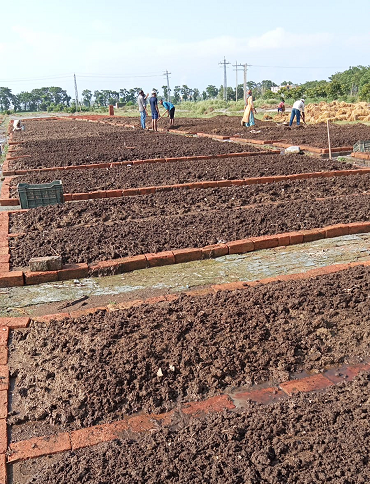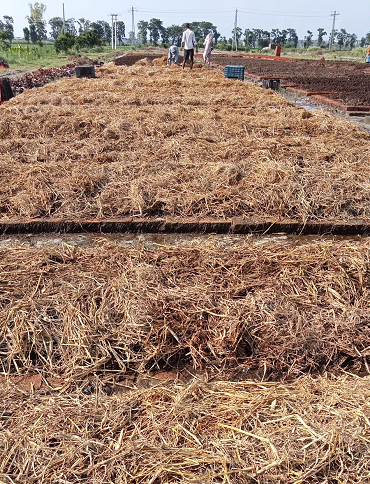Optimizing Vermi-Bed Design for Successful Vermicomposting
Vermicomposting, the process of transforming organic waste into nutrient-rich compost using earthworms, has gained recognition for its ecological benefits and sustainable waste management potential. Among the key determinants of a successful vermicomposting operation is the design of the vermi-beds. These specially crafted beds provide a conducive environment for the earthworms to work their magic. Let’s delve into the intricacies of vermi-bed design to understand how to achieve maximum efficiency and productivity.
Balancing Bed Height and Drainage
One of the fundamental considerations in vermi-bed design is the height of the bed itself. The height of the vermi-bed, ranging from 0.3 to 0.6 meters, carries significant implications for moisture management and drainage. The specific height chosen should be contingent upon the provisions made for the drainage of excess water.
The vermi-bed’s height directly influences the moisture content within the bed. Too much height might lead to water retention issues, potentially creating an environment unfavorable for both earthworms and the decomposition process. Conversely, too little height might lead to inadequate moisture retention, impeding the breakdown of organic matter.
A judicious selection of bed height, coupled with proper drainage arrangements, ensures the ideal moisture level for the earthworms’ activity while preventing waterlogging. This balance is crucial for promoting optimal conditions that facilitate efficient vermicomposting.
Uniform Height: A Path to Consistency
Maintaining a consistent vermi-bed height across the entire width of the bed is another principle to uphold in the design process. Why? Simply put, consistency breeds uniformity in production. Disparities in bed height can lead to variations in the composting process, resulting in uneven decomposition rates and nutrient distribution.
When vermi-beds are uniform in height, the earthworm population and decomposition activity are evenly distributed throughout the bed. This fosters a balanced breakdown of organic waste, generating homogenous vermicompost with consistent quality. This approach also prevents the occurrence of low production areas caused by inadequate bed volumes.
Access and Convenience with Bed Width
Consider the width of the vermi-bed as a gateway to efficient management. A recommended guideline is to ensure that the width of the bed does not exceed 1.5 meters. This restriction serves a dual purpose. Firstly, it enables easy access to the center of the bed. Such access proves invaluable during maintenance tasks, feeding the worms, and harvesting the compost.
Secondly, a limited bed width encourages a manageable working environment. With restricted bed width, the vermi-bed remains within reach, reducing the need for excessive stretching or reaching. This ergonomic advantage translates to more efficient labor and a smoother workflow.
Conclusion
Vermi-bed design is a cornerstone of successful vermicomposting, influencing factors from moisture control to production consistency. Striking the right balance between bed height, uniformity, and width is a nuanced task that can significantly impact the efficiency of the entire vermicomposting operation.
As the world continues to emphasize sustainable waste management and agricultural practices, mastering the art of vermi-bed design becomes ever more relevant. By crafting vermi-beds with the ideal height, uniformity, and width, vermicomposting practitioners are better equipped to harness the transformative power of earthworms, turning organic waste into a valuable resource for nourishing our soils and ecosystems.
OUR RECENT PROJECTS

BED INSTALLATION

EARTH WORMS


